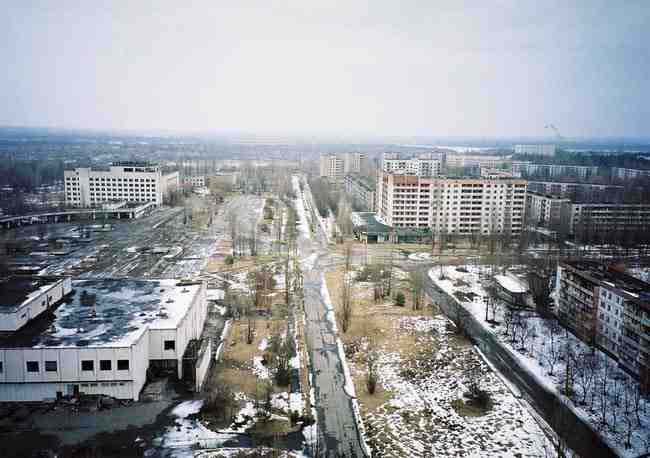Trees and forests emanate innumerable benefits for humans — they are nature’s simultaneous cleaning crew, carbon sinks and aesthetic enhancers. However, they can also be incredible healers, protectors and signs of both hope and remembrance when most needed.
For American Forests’ Global ReLeaf program, 1996 marked an extremely successful year, with hundreds of thousands of trees being planted across 20 states and four countries. However, 1996 was much more than that — halfway across the world, it also marked the 10th anniversary of the Chernobyl nuclear disaster. While American Forests focuses much of its restoration work within the U.S. and the Americas, we are constantly addressing various critical needs throughout the world — and Chernobyl was certainly one of them. On April 26, 1986, a catastrophic nuclear accident occurred at the Chernobyl Nuclear Power Plant in Pripyat, a now-abandoned city in Ukraine. During the disaster, Chernobyl’s nuclear reactor No. 4 was destroyed through a series of explosions and fire, releasing large quantities of radioactive particles. The Chernobyl incident is recorded as being the worst nuclear power plant accident in history, causing at least 31 deaths among employees and with estimates of cancer deaths ranging anywhere from 4,000 to 200,000.
Unsurprisingly, the city of Pripyat was evacuated and thousands were relocated. On the disaster’s 10th anniversary, American Forests hoped to provide assistance to these families by planting over 13,000 trees in the Ukraine, particularly near these refugee settlements. This project sought to alleviate the stresses of relocation on multiple fronts: the planted trees increased wooded areas, improved sanitary conditions near these settlements and directly involved the displaced through project planning and implementation. The planted trees also provided a symbolization of healing at a time desperately needed and worked to serve as a living commemoration of those whose lives were drastically affected.
Since that time, there have been a number of disasters — anthropogenic and natural, across the world and in our own backyards — that American Forests has worked tirelessly to address. In 2002, we took you back to a journey of commemoration for the victims of 9/11. In 2007, we helped restore some hope to New Orleans through our Katrina ReLeaf projects. And, in 2014, we helped plant mangroves for improved coastal resilience in the Philippines, hoping to mitigate the effects of future storms after witnessing the destructive effects of Typhoon Haiyan.
The aftermath of disasters are a devastating component of this work — there is no way around this fact. However, American Forests will continue to offer assistance in response to these critical needs and areas. While peaceful, serene forests often seem detached from these disasters, they possess an incredible capacity to clean, calm, heal and serve as a reminder, both for remembrance and for the continuation of life.
